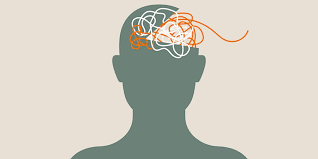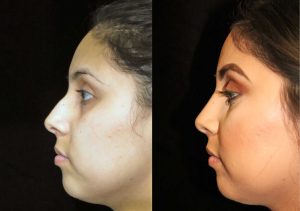The neurodevelopmental disorder known as Attention Deficit Hyperactivity Disorder (ADHD) is typified by impulsivity, hyperactivity, and inattention. In addition to having a substantial influence on everyday functioning and academic achievement, ADHD frequently co-occurs with other learning difficulties. These comorbidities may make impacted people’s educational experiences and general development even more challenging. The purpose of this article is to investigate the connection between comorbid learning disabilities and ADHD by looking at how common these conditions are, what difficulties they provide, and how best to support and intervene.
Recognizing ADHD
ADHD is usually identified in children, however it can also exist in adults. Worldwide, it is thought to impact 2–5% of adults and 5–10% of children. Based on the most common symptoms, the illness is classified into three subtypes: mixed presentation, mainly hyperactive-impulsive, and predominantly inattentive. Symptoms of inattention include inability to focus, thoughtless errors, and forgetfulness in day-to-day tasks. Symptoms of hyperactivity-impulsivity include excessive fidgeting, trouble staying sitting, and talking over other people.
Although the precise etiology of ADHD is unknown, environmental, neurological, and genetic factors are thought to play a role. Research has indicated that ADHD appears to have a hereditary component since it runs in families. Studies on neuroimaging have shown that people with ADHD have different brain morphology and function, especially in areas pertaining to attention and executive function.
ADHD and Learning Disabilities Comorbidity
Basic skills like reading, writing, and math can be difficult to learn for people with learning impairments (LDs), which are neurologically related processing issues. Additionally, they may hinder more advanced abilities including planning ahead, organizing, abstract reasoning, long-term memory, and attention. The three most common learning disabilities are dyslexia, which is difficulty reading, dysgraphia, which is difficulty writing, and dyscalculia, which is difficulty with math.
Research indicates that between 30 and 50 percent of people with ADHD also have a learning disability, indicating a high comorbidity incidence between ADHD and learning disorders. This overlap is important because it makes people’s struggles in educational settings worse. For example, a child who has both dyslexia and ADHD may have trouble not only focusing and paying attention, but also with reading, which is a foundational skill for all subject areas.
Difficulties and Consequences
The co-occurrence of ADHD and learning difficulties poses a distinct set of obstacles that can impact an individual’s life in multiple domains, especially in educational settings.
Academic Performance:
It can be difficult for students with ADHD and co-occurring learning difficulties to stay up academically with their peers. They might struggle to follow directions, finish tasks, and maintain organization. These difficulties may result in subpar academic performance and a low self-perception of one’s own talents.
Behavioral Issues:
The impulsivity and hyperactivity linked to ADHD can result in classroom behavioral issues such talking out of turn, having trouble keeping seated, and being easily distracted. These behaviors can lead to irritation, acting out, and disciplinary concerns when combined with learning challenges.
Social Interactions:
Children who struggle with learning challenges and ADHD may also have trouble interacting with others. They could find it difficult to follow discussions, read social cues, or follow social conventions. Peer rejection, social isolation, and a lack of friendships might result from these difficulties.
Emotional Well-Being:
People with ADHD and learning difficulties may experience emotional distress as a result of their ongoing struggles to function socially and academically. They might feel hopeless, depressed, anxious, or have low self-esteem.
Considerations for Diagnosis and Evaluation
For an intervention to be effective, comorbid learning impairments and ADHD must be accurately diagnosed and assessed. However, because some illnesses’ symptoms overlap, diagnosing them can be challenging. Typically, a thorough assessment includes:
Clinical interviews:
Compiling comprehensive data regarding the person’s medical, educational, developmental, and family background.
Behavioral assessments measure symptoms of ADHD and associated behaviors by using standardized behavior rating scales and questionnaires filled out by the person, parents, and teachers.
Psychoeducational Testing:
Assessing students’ academic performance, cognitive ability, and processing deficiencies through testing. This makes it easier to pinpoint particular learning problems and how they affect academic achievement.
Observation:
Monitoring the person in diverse environments (like home or school) to learn about their conduct and ability to perform in varied situations.
Strategies for Intervention and Support
A comprehensive strategy that takes into account both learning difficulties and ADHD is necessary for an effective intervention for those with both diseases. The following tactics may be useful:
Interventions in Education:
504 Plans and Individualized Education Programs (IEPs):
These plans offer adjustments and accommodations according to the individual requirements of the student. Modified assignments, privileged seats, and extra time for exams are a few examples.
Specialized instruction refers to the use of research-proven teaching techniques and therapies to address certain learning disorders. Examples of these are multimodal math education for dyscalculia and phonics-based approaches for dyslexia.
Using tools like audiobooks, graphic organizers, and speech-to-text software to enhance learning is known as assistive technology.
Interventions Behavioral:
Behavioral therapy:
Methods for treating ADHD-related behaviors that include token economies, behavior modification, and positive reinforcement.
Social Skills Training:
Courses designed to enhance social interactions and emotional control by teaching coping mechanisms, self-control, and social skills.
Management of Medication:
Stimulant Medications:
Methylphenidate and amphetamines are two typical medications recommended to treat symptoms of ADHD. These drugs can enhance focus, impulse control, and attentiveness.
Non-Stimulant drugs:
People who are intolerant of or do not respond to stimulant drugs may utilize substitutes like guanfacine and atomoxetine.
Counseling and Psychotherapy:
Cognitive behavioral therapy (CBT):
CBT can assist people in changing negative thought patterns, managing stress, and creating coping mechanisms.
Family therapy is the process of bringing family members into the therapeutic process in order to enhance support, understanding, and communication.
Working together and advocating:
Cooperation with Teachers:
To establish a positive learning environment and guarantee that interventions are applied consistently, parents, educators, and specialists should collaborate.
Advocacy:
By speaking out for their kid’s needs in the educational system, parents and other caregivers can guarantee that the child has access to the right tools and assistance.
Extended Prognosis
Positive outcomes are achievable for individuals with comorbid learning impairments and ADHD when they receive proper intervention and support. Since these problems can lessen their negative effects on academic achievement, social development, and emotional well-being, early identification and remediation are essential.
The difficulties brought on by ADHD and learning disabilities may change as people get older, but they don’t always go away. Adults with ADHD and learning disabilities may experience challenges with everyday life duties, work, and higher education. On the other hand, a lot of people learn useful coping mechanisms and make the most of their assets to achieve in other facets of life.
In summary
A thorough and customized strategy to intervention and support is necessary due to the complicated and diverse difficulty that the co-occurrence of ADHD and learning impairments provides. Individuals with ADHD and learning disabilities can achieve their full potential by realizing the interplay between these disorders, understanding their impact on academic and social functioning, and putting evidence-based treatments into practice. It is imperative that educators, healthcare professionals, and families work together to establish an atmosphere that supports learning, development, and overall wellbeing for individuals impacted by these disorders.









